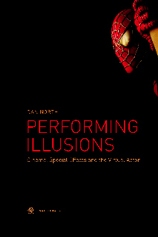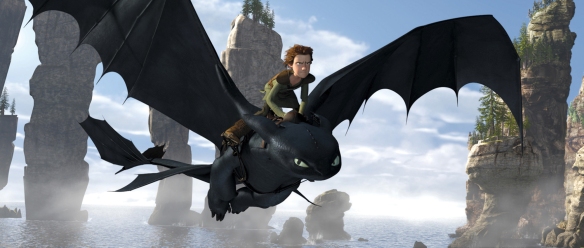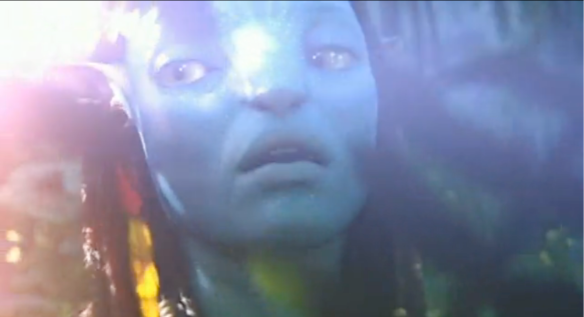 This post compiles reviews and notices about my book, Performing Illusions, published by Wallflower Press in 2008. Newer updates are lower down the page.
This post compiles reviews and notices about my book, Performing Illusions, published by Wallflower Press in 2008. Newer updates are lower down the page.
Originally posted 30th September 2008:
I feel a little uncomfortable using my blog to plug my new book. But I’ll get over it. After a long gestation, Performing Illusions has finally hit the shelves. “Just in time for Christmas”, I can hear you all sigh with relief. This is my first monograph, so it was very satisfying to see it in print with such a beautifully designed cover (I bet all my academic colleagues wish they could have Spider-Man on their books). I look forward, with only minor trepidation, to hearing reader’s responses, and I hope they will feel free to find their way to this blog with their queries or objections. My only regret is that, due to the time it takes to fine-tune the layout, design and printing of a book, some of the arguments, particularly those concerning the latest imaging technologies, might have been superseded by the faster publication channels of online journals and, yes, blogging. But, if I had to sum up the book, I’d say that it is rather old-fashioned in its attempts to conceptualise the spectator’s engagement and interaction with illusionistic images: this approach is supposed to be applicable to all kinds of special effects, no matter how “advanced” the technologies used in their manufacture might be. I do this by setting out a template drawn from the 19th-century magic theatre, arguing that the interplay between magician and audience, and the balance between revelation and concealment, might be a useful way to understand the ways in which viewers of films are drawn to an oscillatory position between immersion in a narrative and a more distant (but arguably just as powerful and interpretative) appreciation of the foregrounded display of technology. Of course, there are also many historical connections between stage magicians and early film pioneers, most notably in the form of Georges Méliès, but these need to be understood in the context of the distinct stage practices which influenced them.

Connecting the chapters of the book is the figure of the virtual actor, the so-called “Holy Grail” of simulated images, marking the perceived endpoint of developments in special effects by finally achieving the dream of a synthetic human representation that can pass onscreen for the real thing. The mythos of this idea seemed to me to be more interesting than the question of whether or not it might ever be attainable, and summed up neatly the deterministic, teleological discourses which circulate around special effects, and which I hoped to undermine with my focus on the conceptual continuities between cinematic illusions, as opposed to their headline-friendly novelty qualities. Overall, though, I wanted to offer some ways of thinking about special effects and how they inflect our understanding of the films in which they appear, how they might offer entrypoints to engagement with the plastic properties of film production and incite productive reflection upon the nature of illusion and photographic ontology.
________________________________
Update 19th November 2008: You need more books like this, apparently…
Two reviews published so far. But who does a writer have to shag bribe to earn a fifth star these days?


In answer to Empire’s no doubt pressing concern (the real answer to which is that the book was finished back when The Golden Compass was just an ill-conceived, mis-titled tangle of re-writes, before it just became a big mess of a film), I have no idea why it won. Out of the nominated films, which also included Pirates of the Caribbean: At Wit’s End and Transformers, Michael Bay’s masterful fusion of Futurist montage and anti-corporate situationism (just kidding – it was a load of dog-knobbing shite not my cup of tea), I guess it was the least obnoxious of the choices offered to the voters. But that doesn’t explain why The Golden Compass‘s Playstation bear fight was rewarded with anything but scorn. Maybe giving an Oscar to a film about jive-talking toy robots was just more than the Academy could countenance. I greatly admired Philip Pullman’s books, so to see them reduced to just another electrified Narnia knock-off was very sad, especially when they had the National Theatre’s grotesque puppet-show version to draw upon for inspiration. I hope that answers the question. OK, that’s a little uncharitable. VFXWorld has a very honest and congenial panel discussion between the various nominees where they compare notes on what was good and bad about each other’s films. The Academy Awwards are voted for by specialists in the field who have a very sound working knowledge of their craft, and are not necessarily voting on the basis of dramatic or aesthetic success. Personally, I might have voted for The Bourne Ultimatum, if only for convincing everybody that it didn’t use any visual effects. But Spider-Man 3, despite being a hateful waste of everybody’s time, did feature that one fascinating moment with the origin of the Sandman, a long-take spectacular gesture that summarised the very essence of foregrounded visual effects work (i.e. nailing your eyes to the screen for a sustained performance of technological delicacy) and briefly revived the hope that the franchise could retain a little of its promised wit.
Now, I’d just like to know why my first two book reviews begin with the words “thick” and “dense”……
____________________________________
Update 20th March 2009:
Performing Illusions has been shortlisted for the 2009 And/Or Book Awards, as announced at the Bookseller.com. You can download the full press release here. The Times online has a slideshow of all the nominees here.
Photography prize shortlists
20.03.09

The two shortlists for the 2009 And/or Book Awards, for books published in the fields of photography and the moving image, have been unveiled.
A winner from each category will share a prize fund of £10,000. The prizes will be announced during an awards ceremony at the BFI Southbank, London, on Thursday 23rd April.
More than 150 titles were submitted across the two categories for the awards, which have been narrowed down to a final seven books by the two judging
panels chaired by Martin Parr (Photography) and Mike Dibb (Moving Image)
The shortlisted titles for the 2009 And/or Photography Award are:
- Brought to Light: Photography and the Invisible, 1840-1900 edited by Corey Keller (Yale University Press)
- From Somewhere to Nowhere: China’s Internal Migrants by Andreas Seibert (Lars Müller)
- Susan Meiselas: In History edited by Kristen Lubbin (Steidl)
- The World from my Front Porch by Larry Towell (Chris Boot)
The shortlisted titles for the 2009 And/or Moving Image Award are:
- Photography and Cinema by David Campany (Reaktion Books)
- Fight Pictures: A History of Boxing and the Early Cinema by Dan Streible (University of California Press)
- Performing Illusions: Cinema, Special Effects and the Virtual Actor by Dan North (Wallflower Press)
____________________________________
Reviews added 1st November 2009:
Reviewed by Deborah Allison at Bright Lights Film Journal:
As the standard model of high-budget filmmaking moves ever closer to twenty-four lies per second, North’s articulate musings on our relationships with cinema and technology are both puissant and timely. His impeccably researched potted history of the most canonical titles of American special-effects cinema is in itself a job well done. Yet the author also has things of importance to say about contemporary culture beyond the bounds of the cinema frame, and it is this that elevates Performing Illusions from a simple history to a challenging and engaging inquiry. Developments in editing, double exposure, and the animation of plasticine may indeed hold their fascinations, yet these somehow fade into the background when one is invited to reflect on the extent to which synthespians embody “our own fear of replication and obsolescence, our replacement by digital constructs capable of outstripping our every ability and nuance.” Here indeed is some real food for thought.
Reviewed by D. Harlan Wilson in the new edition of Extrapolation. You can read the first half here, but I reprint some choice extracts here for my own blushing self-aggrandisement:
Performing Illusions is among the finest and most inventive books on film I have read this century […] Canny analyses and insights regarding the technocapitalist aspects of special effects render unique, often metanarrational readings of cinematic flesh and desire and the relationship between spectacle and spectator.
___________________________________
Review added 10th February 2009:
Posted by Pat at Bill Bop‘s Razor Reel:
“Performing Illusions is an easy-to-read study, that sheds a light on the different techniques and guides us through a history of tricks & illusions. However don’t be fooled, this book is definitely aimed at film scholars and comes with a certain degree of difficulty that might scare off common fans! It’s not a book about special effects and how to learn them, but a study about special effects and the importance of them in film!”
I hadn’t intended to scare anyone off, Pat. And I’m not the one with a blood-stained razor blade in my website logo…
____________________________________
Review added 18th March 2010:
Elizabeth Lathrop has reviewed Performing Illusions for the latest issue of Film Quarterly. It’s a mostly positive review, except for “a few minor objections”, including my focus on the virtual actor of the book’s subtitle:
the inclusion of “virtual actor” seems strange, given North’s reservation about treating the history of special effects in teleological terms (implying some end state of perfection of the synthespian toward which the technology is moving). In fact, in keeping with North’s skepticism about the entirely revolutionary status of digital effects, perhaps his most distinctive contribution to the study of special effects is the first chapter, which links them to the illusionism and performative codes of nineteenth-century magic shows. Why then emphasize the virtual actor in the subtitle?
Hey, I like Chapter One best, too. As for the virtual actor, I guess it served a specific purpose – it’s a structuring device, to be sure, a marker of changes in the uses and depictions of synthetic bodies onscreen, and though it occasionally takes a backseat to whatever else I found myself writing about, the reader is rarely more than a few pages away from a status update on some form of synthetic, animated body, often a human one. Primarily, though, I wanted to argue that, despite the appearance of a series of incremental movements towards “improvements” in simulations of human figures, this rhetoric of perfectibility should not be understood as a story with an ending, but as the ongoing management of expectation and the reception of visual effects.












































 [I’ve been adding to this post occasionally since I first published it on 8th October 2008. I tagged it as a work in progress, but now that I’ve commented a little on every shot, I thought I’d publish the updates (it has more than doubled in length since it first appeared) and declare it (almost) finished. I will continue to update it every once in a while, but I hope you find it interesting and informative in its present form. I still invite comments or further information from anyone who’d like to add to the essay, or who has links or bibliographic references to recommend.]
[I’ve been adding to this post occasionally since I first published it on 8th October 2008. I tagged it as a work in progress, but now that I’ve commented a little on every shot, I thought I’d publish the updates (it has more than doubled in length since it first appeared) and declare it (almost) finished. I will continue to update it every once in a while, but I hope you find it interesting and informative in its present form. I still invite comments or further information from anyone who’d like to add to the essay, or who has links or bibliographic references to recommend.]








 This post compiles reviews and notices about my book, Performing Illusions, published by Wallflower Press in 2008. Newer updates are lower down the page.
This post compiles reviews and notices about my book, Performing Illusions, published by Wallflower Press in 2008. Newer updates are lower down the page. 


























